Golden Pin Design Award Showcases Taiwan's World-class Design
2009/11/18 | By Quincy LiangHoping to establish a well-known brand for Taiwan's rapidly emerging design industry, the Industrial Development Bureau (IDB) of the Ministry of Economic Affairs announced the first Golden Pin Design Award (GPDA) in mid-2009, replacing the Taiwan Design Award (TDA) as the highest profile national design competition on the island.
Like the TDA before it, the GPDA provides a key platform for fostering local design talent. The award was co-organized and held by the Taiwan Design Center (TDC) and the Chinese Society of Interior Designers (CSID), the largest trade association of its kind in Taiwan. The two organizations have been hunting for award contenders to compete for prizes in major international design contests, such as the Good Design Award (G-Mark) of Japan, iF and red dot of Germany, and Industrial Design Excellence Award (IDEA) of the United States.
The IDB claims that the GPDA is based on a design selection system similar to that of other major design awards around the world. The change reflects the award's ambition to adopt a more international focus.
The name "Golden Pin" was chosen because all good ideas have to pass numerous refinements and challenges, like the alchemy of gold. The pin represents the pins used by designers to fix their drawings on drafting tables-small but key tools for bringing an inspired design to life.
Global Scale
According to the TDC, the biggest difference between the GPDA and the predecessor TDA is that the latter originally only presented awards for domestic designs, while the GPDA accepts submissions from around the world. Like other major international design awards, design entries must pass an initially screening to qualify for the Golden Pin logo. Designs earning the Golden Pin-logo also qualify for admission to the award competition.
The international jury for the 2009 GPDA selected 10 winners or design teams from four categories, including two Gold Award winners (four from the industrial category) each for industrial design, visual communication design, packaging design, and interior design.
This year, 695 designs were considered for the awards, including 308 industrial, 99 packaging, 120 visual communication, and 161 interior design submissions.
The Gold Award winners for 2009 are as follows:
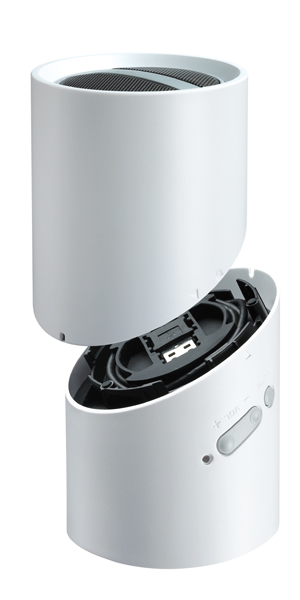
Prize: Gold Award
Category: Industrial Design
Product: Portable USB Speaker
Designer: Foreshot Industrial Corp.
The pair of portable speakers is designed to fit together into a cylindrical shape for visual appeal, portability, and convenient storage. The inclined cut of each speaker assures that sound is directed towards the listener, and power and input wires are hidden using a patented design. The speakers also produce clear and high quality sound for their size.
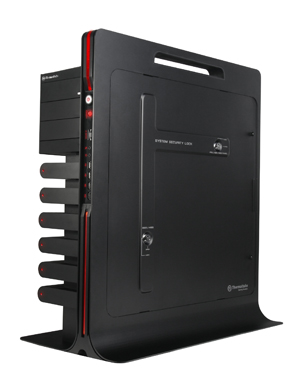
Prize: Gold Award
Category: Industrial Design
Product: Gaming Station Level 10
Designer: Thermaltake Technology Co., Ltd.
Unlike the conventional, rectangular computer housing, the Gaming Station Level 10 is an innovative housing design adopting concepts drawn from architectural aesthetics. The open and modularized architecture allows all of the devices to be easily removed or replaced, while its vertical-type heat-dissipation structure design balances function and styling. The modularized design of Level 10's naked heat-dissipation structure provides greater heat-dissipation efficiency, clearer identifications, and intuitive guides for faster and easier device replacement. The isolated power supply, central-processor and cooling-fan zones improve airflow for better heat-dissipation. The intelligent system security lock and ergonomic grip also protect computer and software, while improving portability.

Prize: Gold Award
Category: Industrial Design
Product: Netbook Booktop M1022
Designer: Giga-Byte Technology Co., Ltd.
The Booktop M1022 notebook PC series is equipped with a 10.1-inch LED-backlit screen. The device can easily be transformed into a desktop PC main kit by placement into a special docking station with power supply (with recharging function). The ultra-slim netbook has a fashionable and decorative design. It has a 92% full-sized keyboard with a 17.5 pitch between keys for more comfortable typing. The device supports 3.5G wireless modules internet connection. The display comes in 1366 x 768 and 1024 x 600 options. The M1022 also makes it easy to swap out memory and drives.
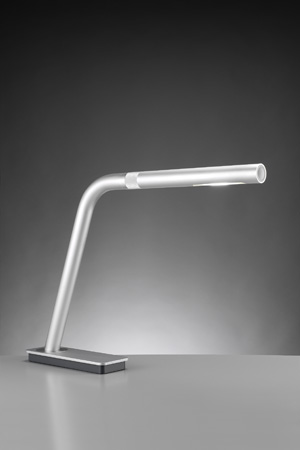
Prize: Gold Award
Category: Industrial Design
Product: LED Table Lamp Pipe
Designer: Process Taiwan
The LED Table Lamp Pipe is green energy lamp designed for the modern home, hotel and office lighting-fixture markets. The simplified, geometric design of the Pipe overcomes the heat-dissipation area limitation of conventional LED lighting fixtures. The front end of the table lamp is a plug-in type LED torchlight that automatically illuminates during power outages. With a built-in battery, the emergency torchlight can provide two hours of illumination during.
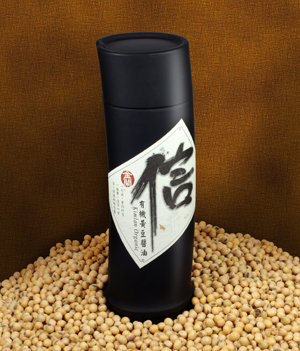
Prize: Gold Award
Category: Packaging Design
Product: Kimlan "Hsin" Soy Sauce
Company: Kimlan Foods Co., Ltd.
Designer: JIVA Design Association
Kimlan "Hsin" Soy Sauce is made with organic soybeans imported from the United States, fermented in Japan, and bottled in Taiwan. The whole production process is fully organic. The packaging design of the top-end soy sauce is based on the Taiwanese bamboo, which conveys an integrated image of modesty, steadiness, and persistence. The black bottle with matte surface treatment conveys a suitably high-end feel to this up-market product.

Prize: Gold Award
Category: Packaging Design
Product: Rice Gift Box Give Me Five
Designer: Stony Image
This gift-box contains five packs of award-winning Presidential Rice. The number "five" has additional significance of good luck in Chinese culture.
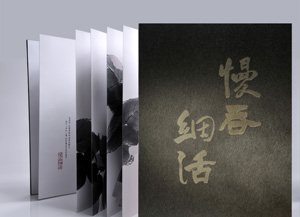
Prize: Gold Award
Category: Visual Communication Design
Product: Taipei International Modern Ink Painting Biennial Introduction Material
Designer: Optima ID
The design of this introductory guide is based on the idea of silkworms eating mulberry leaves as a contrasting metaphor for the rush of modern life. Laser etching techniques were used to cut out the "eaten parts" of the mulberry leaves, adding to the unique visual effect and textural quality of the design.
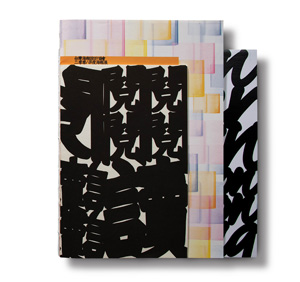
Prize: Gold Award
Category: Visual Communication Design
Product: Taiwan Poster Design Association Annual Poster Exhibition
Company: Leslie Chan Design Co., Ltd.
Paper of various textures and sizes are thoughtfully combined and layered on this introductory material for the 2009 Taiwan Poster Design Association Annual Poster Exhibition, resulting in an effective promotional effect for the annual poster show.
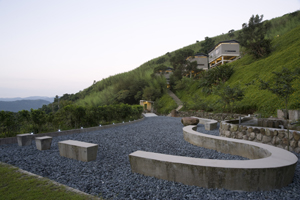
Prize: Gold Award
Category: Interior Design
Product: Hostel Design, The Tavern is Off the City
Designer: Bingo Chuang
About this design, the award jury commented that, it reveals the sense of place in a tranquil interior and layout . . . [and] reconciles nature as a promising element of the space. Sense of itself and spirit through choice of materials and considered layout. Honesty and integrity to site and purpose. Architecturally nicely imbedded in nature.

Prize: Gold Award
Category: Interior Design
Product: The Forest /National Taiwan University Children's Hospital
Designer: Hu Shou-fong
The Forest, a 66-square-meter public waiting space at National Taiwan University Children's Hospital. The space aims to provide a fun, happy and encouraging space for patients and their parents or friends. The interior design work was inspired by the visual design work "Going Forth By Day" by Bill Viola. The project translates a waiting space in a hospital into a dialogue of mortal journeys, revealing an innovative design idea that re-imagines an often less considered space in typical hospitals.




